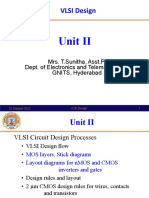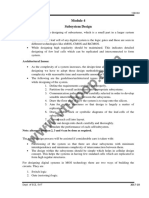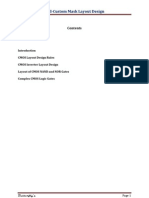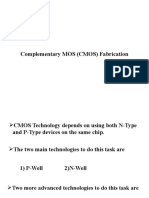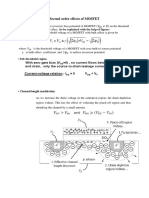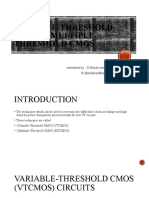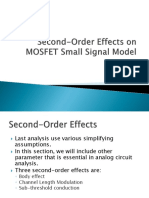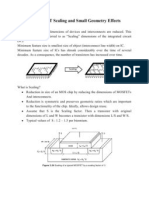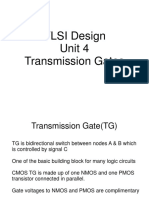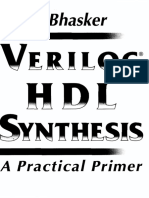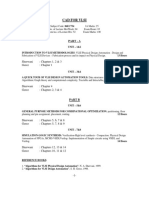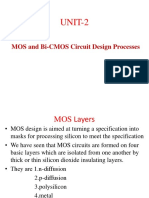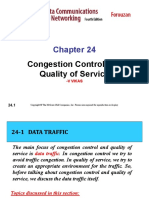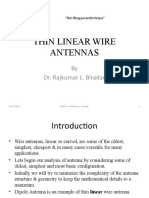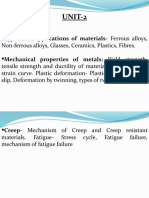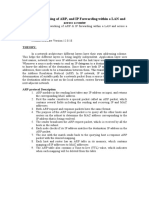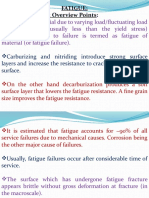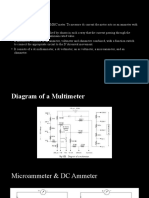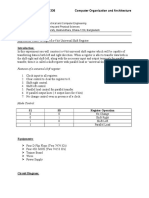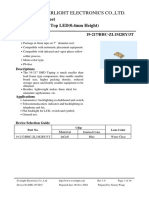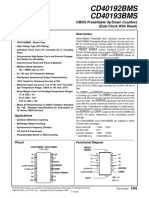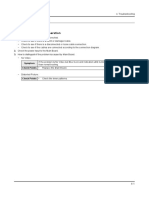100% found this document useful (1 vote)
5K views36 pagesUnit2 - 3 - Design Rules and Layout
This document discusses VLSI circuit design processes and design rules. It covers the VLSI design flow, MOS layers in stick diagrams, and layout diagrams for basic gates. It then describes 2 micron CMOS design rules for minimum widths of wires, contacts and transistors. Scaling of MOS circuits and its limitations are also discussed. The document focuses on design rules and layout, explaining lambda-based and micron-based design rules. It provides details on design rules for NMOS and CMOS technologies, including for wires, transistors, contacts, buried contacts and butting contacts.
Uploaded by
neha yarrapothuCopyright
© © All Rights Reserved
We take content rights seriously. If you suspect this is your content, claim it here.
Available Formats
Download as PDF, TXT or read online on Scribd
100% found this document useful (1 vote)
5K views36 pagesUnit2 - 3 - Design Rules and Layout
This document discusses VLSI circuit design processes and design rules. It covers the VLSI design flow, MOS layers in stick diagrams, and layout diagrams for basic gates. It then describes 2 micron CMOS design rules for minimum widths of wires, contacts and transistors. Scaling of MOS circuits and its limitations are also discussed. The document focuses on design rules and layout, explaining lambda-based and micron-based design rules. It provides details on design rules for NMOS and CMOS technologies, including for wires, transistors, contacts, buried contacts and butting contacts.
Uploaded by
neha yarrapothuCopyright
© © All Rights Reserved
We take content rights seriously. If you suspect this is your content, claim it here.
Available Formats
Download as PDF, TXT or read online on Scribd
/ 36
